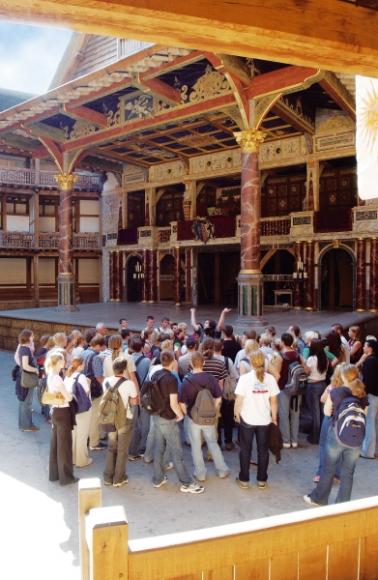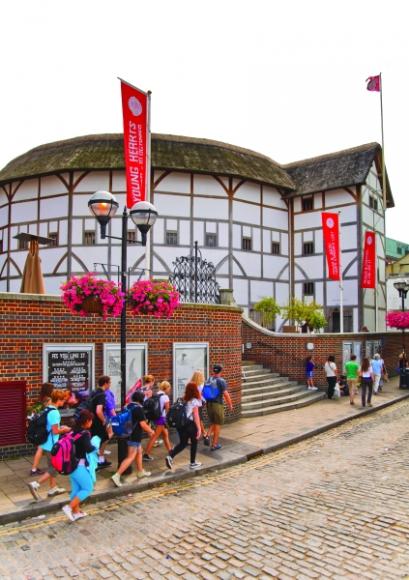Shakespeare's Globe Theatre
The recreated Globe enjoys enormous public popularity and has to be regarded as a theatrical success in practically every sense. Nevertheless it was given a mixed reception from pundits when it first opened. Even the most scholarly reconstruction of an Elizabethan playhouse was bound to be derided by some before it had even risen out of the ground, and it took the faith and dedication of one man, Sam Wanamaker, to conceive the project and drive it to completion (sadly, four years after his death).
The original Globe, in its two successive manifestations (three, if its pre-Bankside life as The Theatre, in Shoreditch, is included), was the climax building of the first group of public theatres built since antiquity. They were, beyond argument, the most important theatres in modern Western history, playing a pivotal role in the first flowering of the English drama and the development of the English language. The greatest driving force in the playwriting of Shakespeare and other dramatists of the time was the popularity of the daylit polygonal playhouses like the Globe, whose physical form helped to shape both the plays and the contemporary styles of acting.
It is regrettable that no trace of these buildings can now be seen above ground and they were also curiously ill-recorded in their own time. What can be deduced about them from written accounts, contemporary (mostly unreliable) illustrations and, by textual analysis, from the plays themselves, has provided generations of historians with fuel for argument. Until the foundations of the Rose were uncovered in 1989 (and, later, a corner of the Globe itself) there was no direct and unequivocal evidence of even their plan form.
Wanamaker’s team included leading experts on Shakespearean theatre, architecture and timber construction and also, most importantly, actors, who could bring their practical insights to test the conclusions of the scholars. The resulting theatre (although a hybrid in some respects, incorporating characteristics of both first and second Globe) is as perfect a recreation as modern knowledge could make it and, as such, it has shed new light on the performance and stage techniques of the period. It is conceived as a working experiment, changed every year to test theories and open to further change as and when more definitive information comes to light. But the Globe is no laboratory model. It is an outstandingly satisfying working theatre, attracting near capacity audiences throughout the summer.
The theatre forms part of an extensive arts complex which includes a museum, educational facilities and a second (indoor) theatre, the Inigo Jones, as yet incomplete, based on surviving designs from that architect’s office (possibly drawn by John Webb), for what may have been Beeston’s Cockpit in Drury Lane.
The Globe employs the building technology of 1600, being timber framed in green oak with daub infill panels. Modern fire protective provision has been made in discreet and mostly unnoticeable ways. The theatre is a twenty-sided polygonal, thatch-roofed structure surrounding an open yard accommodating a standing audience. The tiring house occupies five bays, the remaining bays being galleried in three oak-balustraded tiers with banked bench seating. Before the tiring house is a deep rectangular platform stage with two marbled timber columns supporting a painted heavens with a gabled roof over. At the rear of the stage the tiring house has a galleried frons scenae, gaudily painted, using the design motifs, pigments and paint media appropriate to the sixteenth century.
- 1997 : as theatre - continuing
Further details
- 1993 - 1997 Design/Construction: with timber constructor Peter McCurdyPentagram- ArchitectPerameter- Architect
- 1997 Use: as theatre - continuing
- CapacityCurrentDescription1600 (includes 700 standing)
- ListingNot listed

